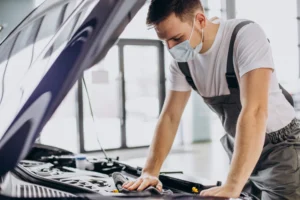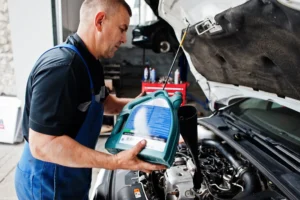All vehicles need regular maintenance, but car owners rarely see the necessity for inspections as the seasons change. As the season changes, so do the expectations from your car’s performance and safety. Yes of course, you can try maintaining your car by yourself, but its better to leave such critical things to the professionals.
Inspections help identify potential safety and mechanical issues in vehicles, ensuring that they are fit to be driven on the road. For your safety, you can schedule your regular maintenance with Applewood Auto Care today. These experts can help you with customized maintenance plans, seasonal and comprehensive inspections.
Whether it is the summer season changing to winter, or spring looking for rain, seasonal inspections are a must which give you peace of mind that your car is ready for the change. In this informative post, you will learn why the seasonal inspections are critical for the longevity of the car as well as the performance and safety of the user.
Table of Contents
ToggleWhat Are Seasonal Vehicle Inspections?
Seasonal vehicle checks are the evaluation that aim on specific areas of your vehicle in response to changes in climate and weather. The checklist for seasonal vehicle checks usually incorporates the tires, battery, fluids, brakes, heating and cooling systems, and windshield wipers. The changing of seasons brings different challenges, therefore it is smarter to deal with potential risks before the season is about to change.
Why Are Seasonal Inspections Important?
1. Preventive Maintenance
The first and foremost advantage of all seasonal inspections is concerned with maintenance. If you don’t check the air pressure and the little gasket in your radiator loses hold during summer, then you can find your car’s engine running hot. Likewise, frustrating battery issues in freezing temperatures can trouble you on harsh or busy days.
2. Enhanced Safety
Every season will have a different impact on vehicles. Roads in winter could be icy and slippery but if we talk about summers, then engines might suffer from strain. It is necessary for people to have their brakes, tires, and other important systems of the vehicle checked before the start of any season. This practice will enhance the safety levels of the vehicles and give you a feeling of peaceful rides.
3. Improved Performance and Longevity
A maintained vehicle has lasting benefits, it works efficiently and has a longer lifespan. Seasonal checks take this one step further by ensuring that your vehicle works properly irrespective of the weather. Seasonal inspection is a wise precaution as it enables those working in this field to be economical with fuel, to be less prone to wear and tear and to have a longer life span.
Key Areas to Inspect During Each Season
-
Winter Inspection Checklist
Tires: Confirm correct tread depth and tire suitability for icy or snowy weather. The depth should be greater than 0.5 inches.
Battery: A battery loses its effective capabilities in cold weather, hence a check is essential for cold weather.
Fluids: You should check windshield fluid, antifreeze and oil levels.
Brakes: Examine brakes for responsiveness to avoid skidding in icy conditions due to loss of traction.
Heating System: Systems for heating and defrosting screens are effective in places that experience cold weather.
-
Summer Inspection Checklist
Tires: Look out for over-inflation indicators which are common in summer due to high temperature.
Air Conditioning: A fully functioning A/C system must be in place to withstand the high temperatures.
Cooling System: Check the radiator and fluid levels to prevent the engine from overheating.
Belts and Hoses: Check for any cracks or signs of wear that can exacerbate in hot weather conditions.
Brakes: Since heat will cause braking effectiveness to diminish, the brakes need to be optimal at all times.
-
Spring and Fall Inspections
Windshield Wipers: If wipers have been worn out, replace them before the spring rains come so that good visibility is guaranteed.
Tires: After winter, rotate and align worn tires as they might be getting uneven wear.
Suspension and Steering: Look for such damages sustained during off-roading in summer, or after troubled winter conditions.
Lights: Check that the head lamps and all rear lamps including the brake lamp and the turn signal are in working condition.
When to Schedule a Seasonal Inspection
When preparing for a seasonal inspection, it is advisable to do so close to the changes in weather. Look for an inspection at the end of autumn before snow comes or during the early parts of spring when the weather is hot. Some auto shops and repair centers may offer inspection services at promotional rates during that period, hence it would be to one’s advantage to check for offers during this period.
You can check out here special offers on inspection plans by Applewood Auto Care Services. Don’t miss this opportunity!
Conclusion: A Small Investment for Long-Term Savings
With seasonal inspections, we can catch small problems before they turn out into major problems and costly repairs. We can say that this is the smartest way to keep your car safe, reliable, and efficient throughout the year.
A well-maintained car is the key to a smooth journey!









